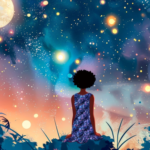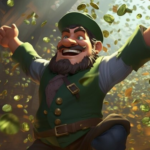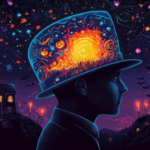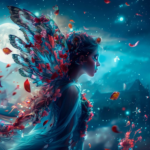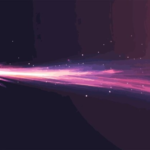Do you enjoy a good mental challenge? If so, you’re going to love “flower” riddles! These clever puzzles are a fun way to engage your mind while celebrating the beauty of nature. Not only do they test your brainpower, but they also introduce you to the world of flowers in a creative and often humorous way. In this article, we’ll dive deep into the fascinating world of “flower” riddles, explore their popularity, and even teach you how to craft your own!
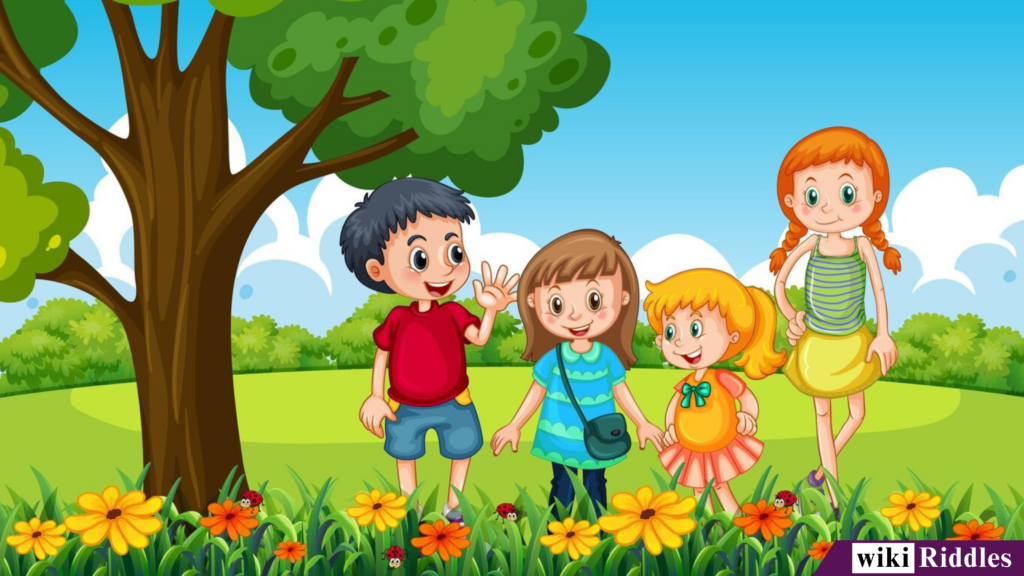
200+ Logic “Flower” Riddles
Symbolic Flower Riddles
- Riddle: I bloom in winter’s coldest breath, symbolizing hope through death. What am I?
Answer: Snowdrop. - Riddle: A flower of passion, my red petals speak of love, but also danger lies above. What am I?
Answer: Rose. - Riddle: Known as the king of flowers, I symbolize honor and respect in all hours. What am I?
Answer: Peony. - Riddle: I am the flower of memory, often seen in fields where soldiers lie. What am I?
Answer: Poppy. - Riddle: A flower that speaks of friendship true, with yellow petals, I’ll wait for you. What am I?
Answer: Sunflower. - Riddle: I bring joy to mothers in May, representing purity in every way. What am I?
Answer: Lily of the Valley. - Riddle: With thorns and purple hue, I am a symbol of strength and protection too. What am I?
Answer: Thistle. - Riddle: I grow in the harshest of lands, symbolizing endurance wherever I stand. What am I?
Answer: Cactus flower. - Riddle: Often gifted for apologies, my delicate petals beg for peace. What am I?
Answer: White tulip. - Riddle: As blue as the sky and rare to find, I symbolize the impossible in your mind. What am I?
Answer: Blue rose.
Pattern Recognition Flower Riddles
- Riddle: A pattern I form when I grow in rows, my petals spiral in a Fibonacci pose. What am I?
Answer: Sunflower. - Riddle: First I am one, then I grow by two, add another three, and so on too. What am I?
Answer: Daffodil arrangement. - Riddle: I grow in a triangle, three rows to start, with each layer adding one more part. What am I?
Answer: Hyacinth cluster. - Riddle: Arranged in rings, I grow outward from the center, each layer larger than the one I enter. What am I?
Answer: Daisy. - Riddle: My petals mirror themselves left to right, a perfect symmetry in plain sight. What am I?
Answer: Orchid. - Riddle: My colors alternate in a clear-cut way, red then yellow, day after day. What am I?
Answer: Tulip field. - Riddle: My leaves grow in pairs, one on each side, forming a ladder where birds often hide. What am I?
Answer: Wisteria vine. - Riddle: As I bloom, my petals twist into a helix, creating a perfect spiral of bliss. What am I?
Answer: Morning glory. - Riddle: My petals grow in alternating turns, spinning like a pinwheel as the sun burns. What am I?
Answer: Gerbera daisy. - Riddle: From one comes two, and two turns to four, my leaves and petals keep growing more. What am I?
Answer: Clover.
Numerical Flower Riddles
- Riddle: I have five petals, but if you take one away, I still stay alive and grow every day. What am I?
Answer: Primrose. - Riddle: I grow in pairs, two at a time, my leaves mirror in symmetry, keeping it prime. What am I?
Answer: Sweet pea. - Riddle: There are three blooms, and each has seven petals. How many petals are there altogether?
Answer: 21 petals (3 x 7 = 21). - Riddle: My petals are in groups of four, but when I bloom, I always show more. What am I?
Answer: Dogwood. - Riddle: I grow in fives, my petals are bright, but if you count my stamens, it doubles the sight. What am I?
Answer: Hibiscus. - Riddle: If you count me in my garden bed, I’m grouped in tens, from feet to head. What am I?
Answer: Lily. - Riddle: I bloom in twos and threes, making odd numbered groups of me. What am I?
Answer: Crocus. - Riddle: My bloom’s in fives, my petals wide, but divide them by three, and two I hide. What am I?
Answer: Buttercup. - Riddle: I have four petals, and my leaves match my flowers in perfect sets of two. What am I?
Answer: Evening primrose. - Riddle: Count me by seven, a lucky flower indeed, my petals form a perfect heptagon seed. What am I?
Answer: African violet.
Wordplay Flower Riddles
- Riddle: I rhyme with nose, and often seen as a sign of love, though I can also prick with thorns. What am I?
Answer: Rose. - Riddle: My name is a homophone for what you win in a competition, but I grow tall and reach for the sun. What am I?
Answer: Sunflower (sounds like “won”). - Riddle: I’m a bloom that sounds like something you’d do to a camera, smiling wide. What am I?
Answer: Snapdragons. - Riddle: My name suggests I should belong in an orchard, but I’m far more delicate and small. What am I?
Answer: Orchid. - Riddle: I’m not a bee, but part of my name sounds like one, buzzing by the petals where I’ve just begun. What am I?
Answer: Bumblebee primrose. - Riddle: I’m something you’d give to a friend who feels down, and my name sounds like “cheer.” What am I?
Answer: Cheerful daisy. - Riddle: My name is a part of your body and a sound you make when surprised, but I’m delicate and full of grace. What am I?
Answer: Iris. - Riddle: My name sounds like something that falls from the sky, but I grow in fields and need the sun’s eye. What am I?
Answer: Rain lily. - Riddle: I share my name with a tool for digging the ground, but I’m far more colorful and profound. What am I?
Answer: Trowel flower. - Riddle: I’m a bloom whose name sounds like a woman’s shoe, though I belong in a garden, not on a foot. What am I?
Answer: Lady’s slipper.
Spatial Arrangement Flower Riddles
- Riddle: In a row, I grow five in height, but if you cut me in half, I’ll grow twice as bright. What am I?
Answer: Lavender. - Riddle: I grow in rings, circling the tree, the more I grow, the more space for me. What am I?
Answer: Marigold. - Riddle: Arranged in a square, four by four, I fill the garden with blooms galore. What am I?
Answer: Pansies. - Riddle: In spirals, I arrange myself on the ground, wrapping around poles without a sound. What am I?
Answer: Clematis. - Riddle: Planted in a grid, I am five by five, but if you take one away, I still survive. What am I?
Answer: Zinnia. - Riddle: I grow in a triangle, three on each side, and when I’m done, new ones will hide. What am I?
Answer: Daffodils. - Riddle: My blooms form a cross, with four ends, but take one away, and the balance bends. What am I?
Answer: Hellebore. - Riddle: Growing in a line, neat and true, I face the sun and follow it through. What am I?
Answer: Sunflowers. - Riddle: I form a circle with blooms all around, if you break it, new ones will be found. What am I?
Answer: Petunias. - Riddle: I fill a box with blooms so neat, but if you pull one, more take its seat. What am I?
Answer: Snapdragons.
Deduction Flower Riddles
- Riddle: There are five flowers, each a different color. The blue flower is not next to the red flower. The yellow flower is between the blue and white flowers. Which flower is in the middle?
Answer: Yellow flower. - Riddle: Three flowers are planted in a row: a rose, a lily, and a daffodil. The rose is not first, but the lily isn’t last. What’s in the middle?
Answer: Lily. - Riddle: Four flowers are in a line. The red flower is next to the yellow, the purple is not next to the blue. Which color is first?
Answer: Red flower. - Riddle: I bloom once every four years, but only in the brightest of days. When am I in full bloom?
Answer: Leap year lily. - Riddle: A garden has three rows. The first row has roses, the second has tulips, and the third has daisies. A bee only visits the rows with even petals. Which row does the bee skip?
Answer: The daisy row. - Riddle: Five flowers are in a vase. If I remove two, twice as many red ones remain as yellow ones. How many red flowers were there initially?
Answer: Four red flowers. - Riddle: A gardener plants lilies, daisies, and roses. The lilies are planted in groups of four, the daisies in threes, and the roses in twos. Which flower has the most plants?
Answer: Lily. - Riddle: Three flowers are in pots. The tulip is to the left of the daffodil, but to the right of the lily. Which flower is in the middle?
Answer: Tulip. - Riddle: If I have five petals and lose two, I still have an even number. What flower am I?
Answer: Daffodil. - Riddle: A garden has seven flowers in a line, with the red one always next to the yellow one. How many possible arrangements are there for the flowers?
Answer: 720 arrangements (since two flowers are locked together, calculate (6! = 720)).
Categorization Flower Riddles
- Riddle: Out of a group of five, two have thorns, one is red, one is yellow, and the last one has the tallest stem. Which flower doesn’t belong?
Answer: The tallest one. - Riddle: Three flowers are blue, four are red, and two are yellow. If I remove all the blue ones, how many red flowers are left?
Answer: Four red flowers. - Riddle: I am a part of the daisy family but with twice the number of petals. What flower am I?
Answer: Gerbera. - Riddle: Grouped by color, three are yellow, five are pink, and two are purple. Which group has the most?
Answer: Pink flowers. - Riddle: You have daisies, roses, and tulips. The roses and tulips have an even number of petals, but only one has an odd number. Which flower has the odd number of petals?
Answer: Daisy. - Riddle: A garden has red flowers, blue flowers, and green flowers. Only one type is edible. Which type is edible?
Answer: Blue flowers. - Riddle: Among a group of flowers, only one can grow in the shade, while the others need full sun. Which flower grows in the shade?
Answer: Lily of the Valley. - Riddle: You find three different kinds of flowers: one that grows in summer, one that blooms in spring, and one that withers in fall. Which one grows in the summer?
Answer: Sunflower. - Riddle: You have four flowers. Two are annuals and two are perennials. The perennials bloom every year. Which one dies after blooming?
Answer: Annual flower. - Riddle: Grouped by scent, two are fragrant, and three have no smell. Which flower is likely to be fragrant?
Answer: Rose.
Time-Related Flower Riddles
- Riddle: I bloom for only one night in the year, my petals unfold in the darkness without fear. What am I?
Answer: Night-blooming cereus. - Riddle: I bloom only in the early morning light, but by noon, my petals close tight. What am I?
Answer: Morning glory. - Riddle: Known for blooming in spring, my petals fall before summer’s sting. What am I?
Answer: Cherry blossom. - Riddle: My petals last for only a day, but before I wither, I brighten your way. What am I?
Answer: Daylily. - Riddle: I start as a small bulb underground, waiting for winter to end before making a sound. What am I?
Answer: Crocus. - Riddle: I bloom in the autumn and last through frost, my bright colors are a final shout before I’m lost. What am I?
Answer: Chrysanthemum. - Riddle: I wait all summer to open my bloom, when I do, the night fills with perfume. What am I?
Answer: Moonflower. - Riddle: I blossom in the heat of July, thriving under the noonday sky. What am I?
Answer: Zinnia. - Riddle: As soon as the frost begins to fall, I am the first to answer winter’s call. What am I?
Answer: Snowdrop. - Riddle: I bloom once every decade or two, my giant flower towers into view. What am I?
Answer: Century plant (Agave).
Mystery Flower Riddles
- Riddle: I have no scent, but I am the most colorful in the garden. I thrive in the sun but wither in shade. What am I?
Answer: Tulip. - Riddle: I am not a flower but look like one; you’ll find me among leaves, often mistaken for a bloom. What am I?
Answer: Bougainvillea (bracts). - Riddle: My petals close when touched, but I’m not afraid. I thrive in tropical climates and enjoy the shade. What am I?
Answer: Sensitive plant (Mimosa pudica). - Riddle: I bloom only under the moon’s soft light, hidden from the day, a mysterious sight. What am I?
Answer: Moonflower. - Riddle: I am known as a ghost, for I have no chlorophyll, yet I grow from the ground. What am I?
Answer: Ghost orchid. - Riddle: I grow in secret, hiding beneath the snow, but when spring comes, I’m the first to show. What am I?
Answer: Crocus. - Riddle: I am often linked with vampires due to my name, yet I am bright and beautiful all the same. What am I?
Answer: Dracula orchid. - Riddle: My blooms open at dawn and close at night, revealing my colors only in the light. What am I?
Answer: Morning glory. - Riddle: Though I look like a rose, my thorns won’t prick. I’m often mistaken for a classic pick. What am I?
Answer: Camellia. - Riddle: Found in enchanted tales, I guard secrets in my roots and hold stories in my bloom. What am I?
Answer: Mandrake.
Logic Grid Flower Riddles
- Riddle: Three flowers bloom in a row: red, yellow, and blue. The red flower is next to the blue, but the yellow is not next to the red. Which flower is in the middle?
Answer: Blue flower. - Riddle: In a garden, there are roses, daisies, and tulips. The roses are not next to the tulips, and the daisies are between two other flowers. Which flowers are on the outside?
Answer: Roses and tulips. - Riddle: Five flowers are planted in a line. The sunflower is not next to the rose. The lily is between the tulip and the daisy. What is the first flower?
Answer: Tulip. - Riddle: There are four types of flowers: red, blue, white, and pink. The pink flower is next to the white one, and the blue flower is not next to the red. What flower comes second?
Answer: White flower. - Riddle: In a garden, there are sunflowers, tulips, and roses. The rose is not next to the sunflower, and the tulip is between two flowers. What is the middle flower?
Answer: Tulip. - Riddle: There are five flowers: three are yellow, and two are red. The two red flowers cannot be next to each other. How are the flowers arranged?
Answer: Alternating red and yellow flowers. - Riddle: Six flowers are arranged in two rows of three. The lily is in the bottom left, and the sunflower is in the top right. The rose is next to the sunflower. What’s in the middle of the top row?
Answer: Tulip. - Riddle: A flower garden has roses, daisies, and marigolds. The marigold is not next to the daisy, and the rose is to the left of the daisy. What flower is to the right?
Answer: Daisy. - Riddle: There are three rows of flowers, and each row contains a different color. The red flower is in the middle row, but the yellow flower is not in the last row. What color is in the first row?
Answer: Yellow. - Riddle: In a flower shop, there are roses, tulips, and lilies. The lilies are not next to the tulips, and the roses are between two other flowers. What flower is on the left?
Answer: Tulip.
Conditional Flower Riddles
- Riddle: If the rose is next to the tulip, then the daisy must be next to the lily. The rose is next to the tulip. Where is the daisy?
Answer: Next to the lily. - Riddle: If the sunflower faces the sun, then the rose blooms. The sunflower faces the sun. What happens next?
Answer: The rose blooms. - Riddle: If the daffodil is in bloom, then the tulip is not. The tulip is in bloom. What can we conclude?
Answer: The daffodil is not in bloom. - Riddle: If the garden has roses, then it must have daisies. The garden does not have daisies. What does it lack?
Answer: Roses. - Riddle: If the lily grows in the sun, the daisy grows in the shade. The lily is growing in the sun. What else grows?
Answer: Daisy grows in the shade. - Riddle: If the tulip blooms in spring, then the sunflower blooms in summer. The sunflower is blooming. What can you infer?
Answer: The tulip bloomed in spring. - Riddle: If it rains, the roses bloom. If it does not rain, the lilies bloom. The lilies are blooming. What can you conclude?
Answer: It did not rain. - Riddle: If the peony is taller than the daffodil, and the daffodil is taller than the tulip, then what is true?
Answer: The peony is taller than the tulip. - Riddle: If the sunflower blooms, the lily does not. The sunflower is not blooming. What happens with the lily?
Answer: The lily may bloom. - Riddle: If the rose is red, then the tulip is yellow. The tulip is not yellow. What can we infer?
Answer: The rose is not red.
Puzzle Flower Riddles
- Riddle: I start with two petals and double every day. On the fifth day, how many petals do I have?
Answer: 32 petals (2^5 = 32). - Riddle: Four flowers stand in a row, and each flower is taller than the one before it. The second flower is 10 inches tall. What’s the height of the fourth?
Answer: Taller than 10 inches. - Riddle: A garden has 5 rows of 4 flowers each. How many flowers are there in total?
Answer: 20 flowers. - Riddle: Three sunflowers grow 2 inches per day. How tall will they be after a week?
Answer: 14 inches (2 inches x 7 days). - Riddle: A bouquet has twice as many roses as daisies. If there are 8 daisies, how many roses are there?
Answer: 16 roses. - Riddle: In a garden, there are 15 flowers. 5 of them are tulips, and 1/3 of the tulips are red. How many red tulips are there?
Answer: 5 red tulips. - Riddle: A flowerbed is divided into 3 sections, each with 4 rows of 5 flowers. How many flowers are there altogether?
Answer: 60 flowers (3 sections x 4 rows x 5 flowers). - Riddle: Five flowers stand in a circle, and each one faces the other. If the sunflower faces north, what direction does the tulip face?
Answer: South. - Riddle: A gardener plants 8 flowers, each in a different color. If two flowers are red and one is blue, how many flowers are not red or blue?
Answer: 5 flowers. - Riddle: In a vase, there are 3 times as many roses as lilies. If there are 9 roses, how many lilies are there?
Answer: 3 lilies.
Symmetry Flower Riddles
- Riddle: My petals mirror each other in perfect halves, creating symmetry for everyone who behalves. What am I?
Answer: Orchid. - Riddle: When I grow, I split into four equal parts, each one matching the other’s start. What am I?
Answer: Clover. - Riddle: With five petals arranged in perfect balance, I’m a symbol of symmetry and fragrance. What am I?
Answer: Jasmine. - Riddle: I have six petals, each identical in size and shape, forming a hexagonal escape. What am I?
Answer: Lily. - Riddle: My blooms are always mirrored on both sides, creating perfect symmetry that never hides. What am I?
Answer: Snapdragons. - Riddle: Four petals arranged like a cross, each one equal, never at a loss. What am I?
Answer: Dogwood. - Riddle: My leaves grow in pairs, always equal and square, giving me perfect symmetry everywhere. What am I?
Answer: Sweet pea. - Riddle: With petals forming a radial display, I am perfectly symmetrical in every way. What am I?
Answer: Daisy. - Riddle: I grow in a spiral, symmetrical and bright, following the sun from morning to night. What am I?
Answer: Sunflower. - Riddle: My petals grow in pairs, creating perfect symmetry, and my name suggests I’m wild and free. What am I?
Answer: Wild rose.
Color Logic Flower Riddles
- Riddle: I am red when I’m young and white when I’m old, yet I’m still the same flower. What am I?
Answer: Rose. - Riddle: My petals are blue when the soil is acidic and pink when it’s basic. What flower am I?
Answer: Hydrangea. - Riddle: I bloom in every color of the rainbow except blue, though I am a symbol of love so true. What flower am I?
Answer: Carnation. - Riddle: I’m the flower that changes color throughout the day, pink in the morning and white by the end of play. What am I?
Answer: Hibiscus. - Riddle: Though I look like I’m on fire with my vibrant orange hue, I grow quietly in the meadow waiting for the morning dew. What am I?
Answer: Marigold. - Riddle: My petals are often purple or yellow, and I’m known to brighten up any fall fellow. What flower am I?
Answer: Aster. - Riddle: My blooms are white, but under the right light, they glow blue in the moon’s sight. What am I?
Answer: Moonflower. - Riddle: My petals are red and yellow stripes, like the colors of a flame that never tires. What am I?
Answer: Flame lily. - Riddle: I am known for my bright red pop of color, often seen growing on roadsides. What am I?
Answer: Poppy. - Riddle: My name suggests a color, yet my petals are often white or purple. What flower am I?
Answer: Bluebell.
Hybrid Flower Riddles
- Riddle: I’m a blend of two different plants, one that’s red and one that’s white. My offspring’s petals are pink. What am I?
Answer: Hybrid tea rose. - Riddle: I’m a mix of two flowers, one from the sun and one from the snow. I bloom yellow and white. What am I?
Answer: Primrose hybrid. - Riddle: I come from a cross between a lily and a rose, yet my fragrance is like neither. What hybrid flower am I?
Answer: Orienpet lily (Oriental-Trumpet lily hybrid). - Riddle: I’m a combination of an orchid and a lily, creating a new type of bloom that’s both exotic and graceful. What am I?
Answer: Orchid lily hybrid. - Riddle: My hybrid form comes from two species, one that grows in the wild and one that blooms in the garden. What flower am I?
Answer: Wild garden iris hybrid. - Riddle: A cross between two species of poppies created me. I bloom in orange, red, and white shades. What hybrid am I?
Answer: Icelandic poppy hybrid. - Riddle: I am a mix of a wild rose and a cultivated garden rose, blending the two to create something unique. What am I?
Answer: Hybrid musk rose. - Riddle: My petals come from both sides of the family: one part violet, the other part pansy. What hybrid flower am I?
Answer: Viola hybrid. - Riddle: I’m a cross between a water lily and a land lily, growing both in ponds and on the ground. What hybrid am I?
Answer: Water lily hybrid. - Riddle: I’m a hybrid of two colorful plants, one that’s red and one that’s purple. Together, I bloom as a magenta flower. What am I?
Answer: Magenta hibiscus hybrid.
Sequence Flower Riddles
- Riddle: I bloom every third day, starting on Monday. When is the next time I bloom after Friday?
Answer: Monday. - Riddle: A flower grows 2 inches on the first day, 4 inches on the second, and doubles each day after that. How tall will it be on the fourth day?
Answer: 16 inches. - Riddle: If I plant one sunflower today, two tomorrow, and double the amount each day, how many sunflowers will I have planted after five days?
Answer: 31 sunflowers. - Riddle: A flower blooms for one day, then fades. Another flower blooms for two days and fades, then a third flower blooms for three days. What day will the fifth flower bloom?
Answer: Day 15. - Riddle: If the first flower in a row blooms on the 2nd of April, and every third flower blooms on the 4th of April, which flower blooms on the 6th of April?
Answer: The second flower in sequence. - Riddle: I water my flowers every second day starting Monday. What day of the week will I water them for the sixth time?
Answer: Sunday. - Riddle: If a daisy blooms on the 1st of the month, and every fifth daisy after that blooms five days later, when will the 10th daisy bloom?
Answer: On the 46th day. - Riddle: A lily blooms in a sequence where every second bloom comes two days after the previous one. If the first bloom is on the 10th, when is the fourth bloom?
Answer: 16th of the month. - Riddle: In a garden, flowers bloom in the order of red, yellow, blue, then purple. If today is yellow, what color will tomorrow be?
Answer: Blue. - Riddle: A gardener plants tulips in a sequence of 2, 4, 6, 8. If this pattern continues, how many tulips will be planted on the fifth planting day?
Answer: 10 tulips.
Riddle Flower Gardens
- Riddle: A garden has roses, daisies, and tulips. The daisies outnumber the tulips by two, and the roses outnumber the daisies by one. How many tulips are there if there are 9 roses?
Answer: 6 tulips. - Riddle: In a garden, I have 7 rows of 4 flowers each, but no two rows have the same type of flower. How many different flowers are there?
Answer: 28 flowers. - Riddle: A flower garden has lilies, daisies, and sunflowers. If the number of sunflowers is twice the number of daisies, and there are 12 lilies, how many daisies are there?
Answer: 6 daisies. - Riddle: A circular garden has 5 rows, each containing 4 flowers. How many flowers are there in total?
Answer: 20 flowers. - Riddle: A gardener plants tulips, roses, and lilies. The tulips make up 1/3 of the total flowers, the roses make up 1/2, and the rest are lilies. How many lilies are there if there are 24 total flowers?
Answer: 4 lilies. - Riddle: A flower garden has 10 rows, with 3 flowers in each row. If each flower is a different color, how many colors are in the garden?
Answer: 30 different colors. - Riddle: In a garden, the number of daisies equals the number of tulips, and the number of roses is half the number of tulips. If there are 12 tulips, how many roses are there?
Answer: 6 roses. - Riddle: A rectangular garden has 4 rows of 5 flowers each. If every row has a different flower, how many types of flowers are in the garden?
Answer: 4 types of flowers. - Riddle: A gardener grows 3 different types of flowers: roses, tulips, and lilies. If each type is planted in equal amounts and there are 15 flowers, how many tulips are there?
Answer: 5 tulips. - Riddle: In a flower garden, the number of sunflowers is equal to the number of daisies, and there are twice as many tulips as daisies. If there are 20 tulips, how many sunflowers are there?
Answer: 10 sunflowers.
Venn Diagram Flower Riddles
- Riddle: In a Venn diagram, one circle represents red flowers, and the other represents flowers with thorns. What flower belongs in the overlap?
Answer: Red rose. - Riddle: Two circles overlap: one for fragrant flowers and one for yellow flowers. What flower belongs in both circles?
Answer: Yellow jasmine. - Riddle: In a Venn diagram, one circle contains annual flowers and the other contains flowers that bloom in spring. Which flower fits in both circles?
Answer: Marigold. - Riddle: One circle is for flowers with five petals, and the other is for flowers that bloom at night. What flower belongs in the intersection?
Answer: Evening primrose. - Riddle: In a Venn diagram, one circle is for perennial flowers and the other for blue flowers. What flower fits in both categories?
Answer: Bluebell. - Riddle: A Venn diagram shows flowers that grow in shade in one circle, and flowers with white petals in another. What fits in both?
Answer: Snowdrop. - Riddle: One circle is for flowers with edible petals, and the other is for flowers with medicinal uses. What belongs in both?
Answer: Calendula. - Riddle: In a Venn diagram, one circle is for wildflowers, and the other is for flowers with pink petals. Which flower belongs to both?
Answer: Wild pink. - Riddle: A Venn diagram includes flowers that attract bees in one circle and flowers that bloom in summer in another. What flower is in the intersection?
Answer: Lavender. - Riddle: One circle is for flowers that grow near water, and the other is for flowers that are purple. What flower fits into both?
Answer: Purple loosestrife.
True or False Flower Riddles
- Riddle: True or False: A sunflower always faces the sun.
Answer: True. - Riddle: True or False: All roses are red.
Answer: False. - Riddle: True or False: Lilies can be poisonous to cats.
Answer: True. - Riddle: True or False: Dandelions are only considered weeds.
Answer: False. - Riddle: True or False: All orchids grow on trees.
Answer: False. - Riddle: True or False: Tulips are native to the Netherlands.
Answer: False. - Riddle: True or False: Chrysanthemums bloom in winter.
Answer: False. - Riddle: True or False: Daisies belong to the sunflower family.
Answer: True. - Riddle: True or False: Peonies are known to live for over 100 years.
Answer: True. - Riddle: True or False: Carnations are a symbol of sorrow.
Answer: False.
Coded Flower Riddles
- Riddle: I’m a flower whose name can be decoded as R-0-S-3. What am I?
Answer: Rose. - Riddle: My name is spelled with the numbers 2, 12, 15, 15, 13. What flower am I?
Answer: Bloom. - Riddle: If you replace every vowel in my name with the next letter in the alphabet, you get Tqzpm. What flower am I?
Answer: Tulip. - Riddle: My name is written in code as 3-15-18-14-6-12-15-23-5-18. What flower am I?
Answer: Cornflower. - Riddle: The numbers 16, 5, 15, 14, 25 spell out my name. What flower am I?
Answer: Peony. - Riddle: I am a flower whose name starts with L and ends with Y, and my letters sum to 50. What flower am I?
Answer: Lily. - Riddle: Decode this: 20-8-9-19 9-19 1 18-15-19-5. What flower am I?
Answer: This is a rose. - Riddle: The code 13-1-18-7-15-12-4 spells out what bright flower?
Answer: Marigold. - Riddle: My code is 3-12-15-22-5-18, a fragrant flower. What am I?
Answer: Clover. - Riddle: The numbers 8, 9, 2, 9, 19, 3, 21, 19 spell out what flower?
Answer: Hibiscus.
What are “Flower” Riddles?
“Flower” riddles are simply puzzles or brainteasers that incorporate the names, characteristics, or symbolism of flowers. They rely on wordplay, metaphors, and sometimes even double meanings to keep you guessing. These riddles can range from easy and lighthearted to complex and tricky, making them enjoyable for people of all ages.
- The Basics of Riddles
At their core, riddles are puzzles that require creative thinking to solve. They often use indirect language, clues, and sometimes humor to guide the solver toward an answer. Riddles come in all shapes and sizes, but “flower” riddles are a specific category that focuses on the flora of the natural world.
- How Flowers Became a Popular Riddle Theme
Flowers are universal symbols in art, culture, and literature, which makes them a perfect subject for riddles. Flowers are not only beautiful to look at, but they also carry a variety of meanings—love, purity, peace, and more—giving riddles an extra layer of depth. The delicate yet diverse nature of flowers lends itself perfectly to the twisting, playful language that riddles require.
Why Are “Flower” Riddles So Popular?
“Flower” riddles have been gaining traction because they combine the beauty of nature with intellectual stimulation. Who wouldn’t want to solve a puzzle that brings to mind a field of blooming flowers?
- Connection Between Nature and Language
One reason these riddles are so captivating is that they seamlessly merge the wonders of the natural world with the flexibility of language. Flowers have names and characteristics that can be used in various ways to form wordplay, puns, and metaphors, keeping the brain active and engaged.
- Mental and Cognitive Benefits of Solving Riddles
Riddles, including flower-based ones, are more than just fun—they’re good for you! Studies have shown that solving riddles helps improve problem-solving skills, enhances creativity, and strengthens memory. When you’re trying to crack a “flower” riddle, you’re exercising both your linguistic and analytical abilities.
The History of Flower Riddles
Riddles have been around for centuries, dating back to ancient cultures that used them for entertainment, teaching, and even competition. But where do “flower” riddles fit into all of this?
- Riddles in Ancient Cultures
From ancient Greece to medieval Europe, riddles have played a significant role in storytelling and intellectual contests. In these times, riddles often featured elements from nature, including flowers, as people were closely connected to the earth and its beauty.
- The Role of Flowers in Symbolism and Mythology
Flowers have always been more than just pretty plants. They hold significant meanings in different cultures, often symbolizing emotions, virtues, or even deities. For instance, the lotus flower is sacred in many Eastern traditions, while the rose is a universal symbol of love. These symbolic meanings add another layer to “flower” riddles, making them richer and more thought-provoking.
Fun and Popular “Flower” Riddles to Try
Now that you know the background, let’s dive into some fun examples of “flower” riddles. Ready to put your mind to the test?
Simple Riddles for Beginners
- I am a flower that you wear on your chest, usually for a wedding, I’m considered the best. What am I?
Answer: A rose. - I’m yellow, bright, and follow the sun. When I bloom, I bring warmth and fun. What am I?
Answer: A sunflower.
Tricky and Advanced Flower Riddles
- I’m a flower, but you might find me in a house full of names. If you don’t water me, I won’t stay the same. What am I?
Answer: A forget-me-not. - I grow in the desert, tall and strong, but I’m not a tree. My blooms are rare and a sight to see. What am I?
Answer: A cactus flower.
Breaking Down Common “Flower” Riddles
Solving “flower” riddles requires a certain amount of creativity, but there are tricks to figuring them out.
- Wordplay and Double Meanings
Many flower riddles use wordplay or puns. For instance, the phrase “I bloom in the morning but sleep at night” might refer to a flower that opens in daylight, like a morning glory. The trick is to think about how words can have multiple meanings or how characteristics of a flower can be described in playful ways.
- How to Spot a Flower in a Riddle
When you’re trying to solve a flower riddle, focus on key words like “bloom,” “petal,” or “thorn.” These clues often hint toward a specific type of flower or plant, narrowing down your guesses.
How to Create Your Own “Flower” Riddles
Feel inspired to write your own? Here’s how you can get started.
- Using Flower Characteristics for Inspiration
Think about the unique traits of flowers—color, shape, smell, and symbolism. Use these features as the foundation of your riddle. For example, “I am a flower that’s red but also thorny” is an easy way to lead someone toward thinking about a rose.
- Play with Language and Descriptions
Don’t be afraid to get creative! Play around with metaphors, analogies, and even puns. The more clever your wording, the trickier and more fun the riddle will be.
Incorporating “Flower” Riddles in Learning
“Flower” riddles aren’t just for fun—they can also be great educational tools.
- Educational Uses in Schools
Teachers can use “flower” riddles to teach students about different types of flowers and their characteristics. They can even incorporate them into lessons on poetry, language arts, or even biology!
- Strengthening Language Skills Through Riddles
Riddles, by nature, challenge your understanding of language. By solving them, you’re practicing vocabulary, synonyms, and lateral thinking. Over time, this improves both your verbal and written communication skills.
The Science Behind Solving Riddles
What happens in your brain when you solve a riddle? Let’s take a closer look.
- How Riddles Challenge Your Brain
When solving a riddle, your brain is forced to think outside the box. You’re actively looking for patterns, forming connections, and discarding irrelevant information—all of which help sharpen your critical thinking skills.
- Cognitive Benefits of Riddle-Solving
Research shows that regularly solving riddles can improve cognitive functions, especially in areas like memory retention, mental flexibility, and problem-solving skills. Essentially, riddles are like a workout for your brain!
Flower Symbolism in Riddles
Flower symbolism is often the secret sauce that makes these riddles so compelling.
- The Rose as a Symbol of Love
The rose, for example, is a flower that universally symbolizes love and passion. Many riddles will use this to their advantage, playing off the rose’s beauty and association with romance.
- The Lotus as a Symbol of Purity
On the other hand, the lotus flower represents purity and rebirth in many cultures. A riddle using the lotus might focus on its ability to rise from muddy waters while remaining pristine, making it a powerful metaphor.
Cultural Significance of Flowers in Riddles
Flowers hold different meanings across cultures, which can add an extra layer of complexity to riddles.
- Flowers in Eastern Traditions
In Eastern traditions, flowers like the chrysanthemum and peony are revered for their beauty and symbolism. Riddles from these cultures often use flowers as metaphors for life, death, and everything in between.
- Flowers in Western Folklore
In Western folklore, flowers like daisies and violets are often symbols of innocence or modesty. Flower riddles that play on these associations may focus on their delicate nature or humble appearance.
Riddles in Everyday Life
Did you know you can use flower riddles as a way to entertain and connect with others?
- Using Flower Riddles for Fun and Social Interaction
Whether you’re hosting a party or just hanging out with friends, flower riddles can be a great conversation starter. They’re lighthearted, fun, and can spark some friendly competition to see who can solve the riddle the fastest.
- How Riddles Can Be a Party Game
Turn flower riddles into a game! Write a few on slips of paper and let everyone try to solve them. The person who gets the most correct answers wins a bouquet of flowers—or just some bragging rights!
Conclusion
In conclusion, these 200+ flower-themed logic riddles are a perfect way to exercise your mind while having fun. Whether you’re solving them on your own or sharing them with friends and family, they offer a delightful mix of challenge and creativity. As you continue to stretch your brain with these floral puzzles, why not explore even more riddle fun? If you’re an automotive enthusiast, check out 200+ Mind-Bending “Automotive” Riddles For Auto Fans for an exciting twist on riddles that will rev up your thinking! Keep challenging yourself and enjoy the journey!
FAQs
Q. What is the most popular flower used in riddles?
The rose is one of the most popular flowers used in riddles because of its strong association with love, beauty, and its recognizable features like thorns and vibrant colors.
Q. Can flower riddles be used in educational settings?
Absolutely! Teachers can use flower riddles to make learning about plants, language arts, and problem-solving more engaging and fun for students.
Q. What makes flower riddles tricky to solve?
The use of wordplay, metaphors, and double meanings makes flower riddles challenging. Solvers must think creatively and consider both the literal and symbolic aspects of flowers.
Q. Are flower riddles a new trend?
No, flower riddles have been around for centuries. They’ve been used in various cultures and are often tied to the symbolism and beauty associated with flowers.
Q. How do flower riddles help in language learning?
Flower riddles improve language skills by encouraging solvers to think critically about word meanings, synonyms, and context, enhancing both vocabulary and comprehension.




